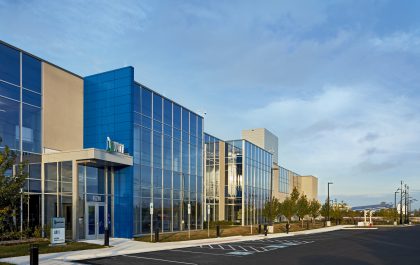In my last article on Data Centers Today, I looked at the three different solutions that companies have today for hosting their digital workloads, data and applications: on-premise data centers, off-premise data centers, and the cloud.
On-Premise Data Center Alternatives
I looked at the evolution of the IT and database center industry and how on-prem database centers are seemingly fading into obscurity – with some notable exceptions – as data centers become more dense, more specialized and more essential to day-to-day operations. I also explained why the other two alternatives – off-prem database centers and IT cloud computing – have become the solutions of choice for today’s enterprises.
However, we ended on a bit of a cliff-hanger, explaining that some workloads are better suited for particular environments and promising to dive deeper into why organizations would choose one solution over the other. So, let’s jump in.
Edge and Elasticity = Cloud
While off-prem, outsourced database centers are clearly a superior alternative to on-prem data centers, they still have some of their own challenges. Off-prem data centers, much like their on-prem cousins, require planning. For example, to increase capacity, hardware needs to be acquired, provisioned and installed. This takes some time, and more importantly, it requires extra investment, which means that off-prem database centers have to be built to meet peek requirements. And, if those peak requirements are surpassed, it can spell problems for the end user if additional capacity is needed quickly without proper planning. (Little known fact: Most organizations spend on average four dollars on compute/network infrastructure for every one dollar spent on building infrastructure for one refresh cycle.)
This is not a problem for IT cloud computing. In fact, elasticity and scalability are one of the five core cloud principals. Since cloud services and solutions are predominantly multi-tenant shared resources that can be acquired and provisioned rapidly and easily, they can be scaled up quickly to meet larger demand and scaled down when demand subsides. In fact, modern automation solutions can be employed that will automatically scale up IT cloud computing infrastructure if existing services are quickly being overwhelmed.
Also, while outsourced, off-prem database center providers offer data center locations in many of the hottest, most desirable data center markets, establishing an ubiquitous, global presence with outsourced database centers means leasing and outfitting data center space multiple times in disparate locations which can take time and capital.
Cloud resources, on the other hand, can be spun up in particular geographic locations with little to no up-front capital expenditure. This can come in handy when trying to move the storage of data or the compute function to the edge or quickly establish a global presence. It can also be a solution for meeting data sovereignty requirements by enabling a company that’s headquartered in one country to keep data or applications hosted in another country with strict data sovereignty requirements.
So what kinds of workloads are best for IT cloud computing? Ones that need the scalability and elasticity that the cloud enables. Also, workloads that have a large edge requirement and a lot of users.
A great example of this is the streaming content powerhouse, Netflix.
Unless you were born in the past 10 years, you most likely remember Netflix’s ascent from DVD-mailing movie rental company to one of the world’s leading providers of streaming video content competing against such global juggernauts as Disney and Amazon for subscribers. That transition from delivering movies via physical media sent in the mail to streaming provider required a significant investment in digital infrastructure.
The particular requirements of Netflix’s application and business model make it a perfect case study for why some enterprises choose to invest heavily in cloud infrastructure. Surfing Netflix for something to watch would not nearly be as fun of a Friday evening if you lived in New York City and the company’s main content library existed in a database center in Silicon Valley. The latency, alone, would make that a frustrating user experience.
Love is Blind started stalling out and buffering right before two singles got engaged without ever seeing each other, users would get understandably angry. If users had to wait for a video to buffer before seeing if a soufflé collapsed on The Great British Baking Show, they would start tossing crumpets at the screen. User experience issues like these could be the difference between keeping subscribers or losing them to competitors like Peacock.
Because of these requirements, Netflix chose early on to embrace Amazon Web Services (AWS) for its digital infrastructure, leveraging IT cloud computing resources in multiple geographic locations that can host video content at the edge.
In the Netflix system, video content is stored in a central repository – most likely an off-prem data center – until it’s requested for the first time by a user in a specific geographic area. That video content is then pushed to cloud storage in that geographic region where it’s stored and served to every other user that requests it. This eliminates latency, ensures that the video is served quickly and improves the user experience for the subscriber.
Using AWS for its infrastructure also gives Netflix the scalability and elasticity that it needs. As the company has detailed, it’s not very good at predicting demand for its services and solutions. If the company provisioned a large database center for a workload that its subscribers just didn’t use, it would have wasted capital. If it under-provisioned its physical infrastructure for a feature that exploded in popularity and usage, it would go down almost immediately. The cloud gives Netflix the scalability and elasticity to take chances and launch services, even if it doesn’t know if the demand is there or not.
So, workloads that require elasticity, scalability and have a large edge requirement work great in IT cloud computing. But what about off-prem data centers?
Low Op-Ex for Everything Else
While companies in the startup stage can find serious cost savings in the cloud, many find that the cost savings start to evaporate as the organization grows. The benefit of IT cloud computing services to small companies is that they can get just the right amount of compute and storage resources needed to meet their requirements without having to pay up-front to provision a physical database center.

Instead, they pay a nominal, recurring operating expense for cloud resources. But, as those companies grow and expand, they start to use a lot of cloud resources, and those nominal operating expenses begin to compound exponentially. This is especially true in really large organizations, where IT cloud computing infrastructure costs are further exacerbated by shadow IT and rogue clouds, and by disparate organizations within the company spinning up and paying for cloud resources on corporate clouds or expense accounts.
While IT cloud computing is exceptional for getting things to the edge and making it easier to scale with demand, not every workload needs to be at the edge, and not every workload requires that level or speed of scalability. This has led to some enterprises eschewing the cloud, altogether, for off-prem data centers. This has also led to some companies moving back to off-prem data centers after the recurring operating costs from their cloud infrastructure began to increase to the point of discomfort.
Bringing It All Together
Now, up to this point, I may have made it sound like companies use only IT cloud computing resources or off-prem database centers, and there’s nothing in-between. Well, that’s not always the case. In fact, many modern enterprises utilize a hybrid approach for their IT resources – choosing off-prem data centers for some workloads and the cloud for others. In these organizations, they identify the workloads that require scalability or access to the edge and move those into the cloud. Everything else that doesn’t require those cloud attributes and benefits is left in an off-prem data center where the costs are more consistent and better controlled.
A great example of a company that has moved back from the cloud to off-prem data centers is Dropbox. About seven years ago, the company took the interesting step of relocating much of its service offering and its customer’s data from AWS to its own off-prem database center infrastructure.
Ultimately, Dropbox is just one of many companies that have realized that IT cloud computing offers convenience, development tools, scalability, flexibility and the ability to shift capital expenses into operating expenses. But it isn’t necessarily cheaper.
There will always be workloads that need the capabilities that the cloud brings to the table, but not all workloads require those things. The hybrid approach has become the de facto standard in the industry for this very reason. But to make the hybrid approach work, companies need to take the time to understand which workloads need the cloud and which don’t.
To learn more about Vantage Data Center’s hyperscale campuses located around the world, visit www.vantage-dc.com.
Steve Conner
Steve Conner serves as vice president, solutions engineering at Vantage Data Centers. He is responsible for leading the company’s sales team on technical requirements in pursuit of new business.
Conner has more than 25 years of experience in building and leading highly motivated sales and engineering teams. Prior to Vantage, Conner led the sales and engineering teams at Cloudistics, taking the start-up’s revenue from $0 to over $5 million in its first year of selling. He held multiple senior level positions at Nutanix where he built a multi-million-dollar business unit focused on managed service providers.
Conner holds a Bachelor of Science degree in computer science from University of Richmond, a Master of Science degree in computer science from George Mason University, and an MBA from Florida Institute of Technology. As part of his focus on technology and enterprise architecture, Conner has earned multiple certifications including CCNP/DP, CISSP and ISSAP.



